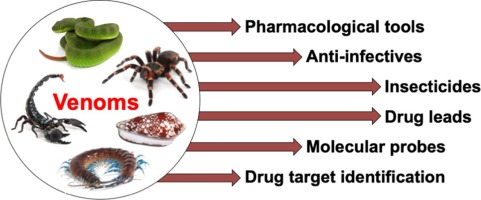How Wild Animal Toxins Are Shaping Human Innovation
Introduction:
Wild animals possess a fascinating array of adaptations, including venom and poison, which they use for various purposes such as defense, predation, and competition. While these natural toxins play crucial roles in the ecological balance of ecosystems, humans have found ways to exploit them for various purposes. From traditional medicine to scientific research and even warfare, the use of wild animal poisons by humans has had significant impacts across different factors. Let’s explore these factors in detail:

1. Traditional Medicine:
Throughout history, humans have used animal toxins in traditional medicine practices. Examples include:
- Snake Venom: Certain snake venoms contain compounds that have been used in traditional medicine for treating various ailments like heart conditions, pain relief, and even cancer.
- Frog Toxins: Secretions from certain species of frogs have been used in traditional medicine for treating infections, inflammation, and even depression.
- Scorpion Venom: In some cultures, scorpion venom has been used as a remedy for conditions such as rheumatism and arthritis.
2. Scientific Research:
Wild animal toxins have also played a crucial role in scientific research, particularly in pharmacology and drug discovery:
- Venom Peptides: Many venomous animals, including snakes, spiders, and cone snails, produce peptides with potent pharmacological effects. These peptides have been studied extensively for their potential in developing new drugs for conditions like chronic pain, hypertension, and cancer.
- Neurotoxins: Some animal venoms contain neurotoxins that can provide valuable insights into the nervous system’s functioning. Studying these toxins can lead to a better understanding of neurological disorders and the development of new treatments.
3. Pest Control:
Certain animal toxins have been utilized for pest control purposes:
- Botanical Insecticides: Plant-derived toxins, such as those found in neem seeds or pyrethrum flowers, have been used as natural alternatives to synthetic pesticides for controlling agricultural pests.
- Biological Control: Predatory animals that produce toxins, such as certain species of spiders or wasps, have been introduced into agricultural ecosystems to control pest populations naturally.
4. Defense and Warfare:
Historically, humans have also weaponized animal toxins for defense and warfare purposes:
- Biological Warfare: Some civilizations have used animal toxins, such as venomous snakes or toxic plants, as weapons in warfare. These toxins were often applied to weapons or used to contaminate water sources.
- Poisonous Animals as Tools: Certain cultures have employed poisonous animals like venomous snakes or insects for defense purposes, training them to recognize and attack intruders.
5. Conservation:
Understanding the properties and potential uses of wild animal toxins can also contribute to conservation efforts:
- Bioprospecting: By studying the toxins produced by venomous animals, scientists can identify compounds with therapeutic potential. This incentivizes the conservation of these animals and their habitats, protecting biodiversity.
- Anti-poaching Efforts: In regions where poaching is a significant threat to wildlife, the potential economic value of venomous animals for bioprospecting can provide an alternative income source, reducing the incentive for poaching.
Ethical Considerations:
While the use of wild animal toxins by humans offers various benefits, it also raises ethical concerns:
- Animal Welfare: Extracting toxins from animals, whether through milking venomous snakes or harvesting frog secretions, can be stressful or harmful to the animals involved.
- Overexploitation: Unregulated harvesting of wild animals for their toxins can lead to population declines or even extinction, disrupting ecosystems and biodiversity.
- Cultural Appropriation: The commercialization of traditional medicine practices involving wild animal toxins can raise questions of cultural appropriation and exploitation of indigenous knowledge.
Conclusion:
The utilization of wild animal toxins by humans spans a wide range of factors, from traditional medicine to scientific research, pest control, defense, and conservation. While these toxins offer valuable opportunities for medicine, research, and pest management, their exploitation raises important ethical considerations regarding animal welfare, conservation, and cultural sensitivity. Striking a balance between harnessing the potential benefits of wild animal toxins and ensuring their sustainable and ethical use is crucial for the well-being of both humans and wildlife.